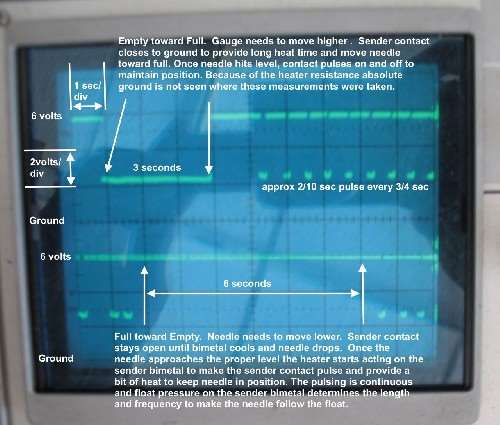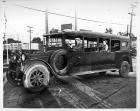|
Re: replacement gas tank???
|
||||
|---|---|---|---|---|
|
Forum Ambassador
|
It requires some work but this is the best anyone has come up with yet for a 22-23 series gas tank.
packardinfo.com/xoops/html/modules/newbb ... .php?post_id=194640#forumpost194640 And some more photos on his PAC blog packardclub.org/forum/viewtopic.php?f=15&t=2251&start=450#p20934 The T Bird sender is only good on 51-6 models. The 22-23 used a completely different arrangement. Joe has also done some work on that and some info on a possibility is on his PAC blog too.
Posted on: 2017/8/20 23:07
|
|||
|
Howard
|
||||
|
||||
|
Re: replacement gas tank???
|
||||
|---|---|---|---|---|
|
Not too shy to talk
|
I was looking for a drop in and go type thing lol.
As for the sending unit, I put it in my 1950 packard and worked perfectly.
Posted on: 2017/8/21 0:02
|
|||
|
1950 Packard Standard 8- plain jane no options!
24,000 original miles |
||||
|
||||
|
Re: replacement gas tank???
|
||||
|---|---|---|---|---|
|
Forum Ambassador
|
Tell us more about the sending unit you used in your 50. If you have found something that works reliably, reads consistently over a long period of time and is available I am sure others would like to know. Several have tried various combinations of available senders to try and duplicate the original and, AFAIK, none have been operational or proven to work long term.
Some early Fords did use a sender similar to 22-23 series but the T Bird unit we are familiar with is a straight resistance type sender with a range of approx 73 ohms empty and 10 full. That range was used on Packards and some Ford, Chrysler and AMC products up thru the late 70s and works well with the later King-Seeley units Packard used from 51-56. The 22-23 series Packards used an early King-Seeley bimetal type sender where the output was a simple on and off action. The frequency and duration of the on/off was determined by how much the float put pressure on a bimetal strip to determine how much the heater had to work to open and close a contact. Low fuel and the on cycle was short, full tank and the on signal was longer to make the heater in the gauge unit heat the gauge bimetal more to make the needle move higher on the gauge scale. At a place where the heaters in the gauge and tank units reached a balance the on time was in very short pulses just to keep the needle stationary. Too little heat and the gauge would fall, too much and the needle would rise. The issue that needs to be proven with a straight resistance sender is without the short off time for the gauge heater to cool the needle bimetal, will the gauge stay accurate or continue to rise over a period of time and will the heater in the gauge stand up to being constantly on without burning out. When someone has some long use information that a sender works well, it will be good news to many 22-23 owners who are looking for senders. Here is what is electrically happening with the 22-23 sender.
Posted on: 2017/8/21 9:03
|
|||
|
Howard
|
||||
|
||||

 (123.17 KB)
(123.17 KB)







